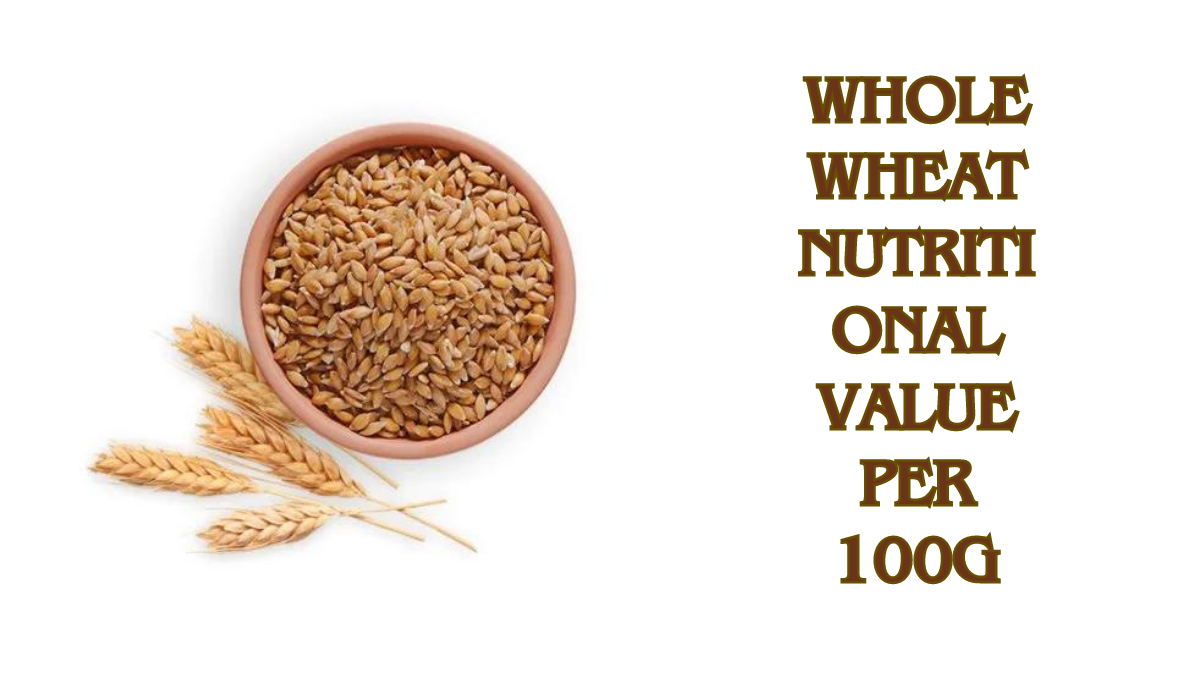A Low Glycemic Index (GI) diet is a nutritional strategy that centers on the consumption of foods with a reduced impact on blood sugar levels. The Glycemic Index categorizes carbohydrates based on their ability to raise blood glucose quickly. Opting for foods with a low GI value (55 or less on the GI scale) is a key aspect of this dietary approach, as they are thought to cause a slower and more gradual increase in blood sugar levels. Here are essential principles and recommendations for following a Low GI diet:
- Prioritize Low GI Foods:
- Choose foods with a low GI value, such as most non-starchy vegetables, legumes, whole grains, and specific fruits.
- Emphasize Whole Grains:
- Select whole grains like brown rice, quinoa, barley, and whole wheat over refined grains, as they contain more fiber and nutrients, contributing to a lower GI.
- Opt for Lean Proteins:
- Include lean protein sources like poultry, fish, tofu, legumes, and low-fat dairy, as proteins can help stabilize blood sugar levels.
- Incorporate Healthy Fats:
- Include healthy fats from sources like avocados, nuts, seeds, and olive oil, which can slow down the digestion and absorption of carbohydrates, leading to a more gradual rise in blood sugar.
- Include Non-Starchy Vegetables:
- Non-starchy vegetables such as leafy greens, broccoli, cauliflower, and bell peppers are low in carbohydrates and have a minimal impact on blood sugar.
- Limit Refined Carbs and Sugars:
- Reduce the intake of processed and refined carbohydrates, along with sugary foods and beverages, as they typically have a higher GI and can cause rapid spikes in blood sugar.
- Combine Carbs with Protein and Fiber:
- Pairing carbohydrates with protein and fiber can help mitigate their impact on blood sugar. For instance, combining whole fruit with nuts or adding beans to a meal.
- Control Portion Sizes:
- Be mindful of portion sizes, as even low-GI foods can influence blood sugar levels if consumed in large quantities.
- Opt for Low-GI Snacks:
- Choose nutrient-dense snacks with a lower GI, such as yogurt with berries, raw vegetables with hummus, or a small serving of nuts.
- Personalize the Diet:
- Tailor the Low GI diet to individual factors, including health goals, lifestyle, and any medical conditions. Seeking guidance from a healthcare professional or registered dietitian for personalized advice is advisable.
Adopting a Low GI diet may be particularly beneficial for individuals managing blood sugar levels, especially those with diabetes or insulin resistance. However, it’s crucial to approach dietary changes holistically, considering overall nutritional balance and individual lifestyle factors.
What is a Low GI Diet?
A Low Glycemic Index (GI) diet is a dietary approach designed to prioritize foods that have a reduced impact on blood sugar levels. The Glycemic Index is a scale that ranks carbohydrates based on their ability to elevate blood glucose levels. Adopting a Low GI diet involves selecting foods with a low GI value (55 or less on the GI scale). These foods are believed to induce a slower and more gradual increase in blood sugar, fostering better blood sugar control and providing sustained energy. The key principles of a Low GI diet include:
- Preference for Low GI Foods: Prioritizing foods with a low GI value, such as most non-starchy vegetables, legumes, whole grains, and certain fruits.
- Emphasis on Whole Grains: Opting for whole grains like brown rice, quinoa, barley, and whole wheat instead of refined grains. Whole grains offer more fiber and nutrients, contributing to a lower GI.
- Inclusion of Lean Proteins: Incorporating lean protein sources such as poultry, fish, tofu, legumes, and low-fat dairy. Proteins are known to help stabilize blood sugar levels.
- Integration of Healthy Fats: Including sources of healthy fats like avocados, nuts, seeds, and olive oil. These fats can slow down the digestion and absorption of carbohydrates, resulting in a more gradual rise in blood sugar.
- Consumption of Non-Starchy Vegetables: Including a variety of non-starchy vegetables such as leafy greens, broccoli, cauliflower, and bell peppers, as these are generally low in carbohydrates and have a minimal impact on blood sugar.
- Limitation of Refined Carbohydrates and Sugars: Reducing the intake of highly processed and refined carbohydrates, as well as sugary foods and beverages, which typically have a higher GI and can cause rapid spikes in blood sugar.
- Combination of Carbohydrates with Protein and Fiber: Pairing carbohydrates with protein and fiber to mitigate their impact on blood sugar. For example, combining whole fruit with a handful of nuts or incorporating beans into a meal.
- Mindful Portion Control: Being aware of portion sizes, as consuming large quantities of even low-GI foods can still affect blood sugar levels.
- Selection of Low-GI Snacks: Choosing snacks that are nutrient-dense and have a lower GI, such as yogurt with berries, raw vegetables with hummus, or a small serving of nuts.
- Personalization of the Diet: Considering individual factors such as personal health goals, lifestyle, and any medical conditions when adopting a Low GI diet. Seeking guidance from healthcare professionals or registered dietitians can provide personalized advice.
A Low GI diet is commonly recommended for individuals with diabetes or those seeking effective blood sugar management. It is crucial to emphasize that while the Glycemic Index is a valuable tool, maintaining overall nutritional balance and considering individual lifestyle factors are essential for a healthy and sustainable dietary pattern.
How to Decide What Can Be Eaten?
Determining what to eat based on the Glycemic Index (GI) involves selecting foods with a lower impact on blood sugar levels. The GI, which ranks carbohydrates on a scale from 0 to 100, with lower values indicating slower increases in blood sugar, serves as a guide for making choices that support better blood sugar control. Here are steps to integrate the Glycemic Index into your dietary decisions:
- Comprehend the Glycemic Index:
- Gain familiarity with the GI scale, where foods with a low GI (55 or less) are considered to have a gentler impact on blood sugar, while those with a high GI (70 or more) can cause rapid spikes.
- Prioritize Low-GI Foods:
- Choose foods with a low GI value, including non-starchy vegetables, legumes, whole grains, nuts, seeds, and specific fruits like berries, cherries, and apples.
- Opt for Whole Grains:
- Favor whole grains over refined grains, as they generally have a lower GI due to their higher fiber content, which slows down carbohydrate absorption.
- Incorporate Lean Proteins:
- Combine carbohydrates with lean proteins to mitigate the overall GI impact of a meal and stabilize blood sugar levels.
- Include Healthy Fats:
- Integrate sources of healthy fats, such as avocados, nuts, seeds, and olive oil, to slow down carbohydrate digestion and lower the overall GI.
- Pair Carbs with Fiber:
- Select foods rich in fiber to further slow sugar absorption. Whole fruits, vegetables, and whole grains are excellent sources of dietary fiber.
- Limit Highly Processed Foods:
- Reduce intake of highly processed and refined carbohydrates, known for having higher GIs. This includes sugary snacks, white bread, and sugary cereals.
- Control Portion Sizes:
- Exercise caution with portion sizes, recognizing that even low-GI foods can impact blood sugar levels if consumed excessively.
- Consider the Glycemic Load (GL):
- Acknowledge that while the Glycemic Index is valuable, the Glycemic Load factors in both the quality and quantity of carbohydrates in a serving. Large amounts of even low-GI foods may result in a high GL.
- Personalize Your Choices:
- Factor in individual considerations such as health goals, dietary preferences, and specific health conditions when making food choices based on the Glycemic Index.
- Monitor Blood Sugar Levels:
- If diabetes or blood sugar concerns are present, regularly monitor blood glucose levels to understand the individual impact of different foods.
It’s crucial to recognize that the Glycemic Index is just one aspect of overall nutrition. A well-balanced and diverse diet, combined with aspects like portion control and meal timing, contributes to overall health. For personalized advice or specific health concerns, consulting with a healthcare professional or registered dietitian is recommended.
Low GI Diet vs Keto
A Low Glycemic Index (GI) diet and the ketogenic (keto) diet represent distinct dietary approaches, each characterized by unique principles, objectives, and physiological effects. A comparative analysis reveals the following:
Low Glycemic Index (GI) Diet:
1. Objective:
- Goal: The primary objective of a low GI diet is to select carbohydrates that elicit a gradual impact on blood sugar levels, fostering stable blood glucose and sustained energy.
- Health Focus: Commonly recommended for individuals dealing with diabetes, insulin resistance, or those pursuing weight management and enhanced blood sugar control.
2. Carbohydrate Intake:
- Type of Carbs: Emphasizes the selection of complex carbohydrates with a low GI, such as whole grains, legumes, non-starchy vegetables, and specific fruits.
- Fiber Content: Gives priority to high-fiber foods to impede the rapid absorption of carbohydrates.
3. Macronutrient Composition:
- Balanced Diet: Typically incorporates a balanced distribution of macronutrients, featuring moderate amounts of carbohydrates, proteins, and fats.
- Protein and Fats: Encourages the consumption of lean proteins and healthy fats.
4. Sustainability:
- Sustainability: Generally considered sustainable for the long term due to its balanced and adaptable approach.
- Variety: Permits a broad range of foods, contributing to ease of adherence in social situations.
Ketogenic (Keto) Diet:
1. Objective:
- Goal: The primary aim of the keto diet is to induce a state of ketosis, wherein the body relies on ketones for energy by significantly reducing carbohydrate intake.
- Health Focus: Frequently employed for weight loss, managing epilepsy, and potential use in specific neurological conditions.
2. Carbohydrate Intake:
- Very Low Carbs: Strictly restricts carbohydrate intake to achieve and sustain ketosis, typically allowing 20-50 grams of carbohydrates per day.
- Type of Carbs: Limits high-carb foods, including numerous fruits, grains, and starchy vegetables.
3. Macronutrient Composition:
- High Fat, Moderate Protein: Characterized by elevated fat intake (usually around 70-75% of total calories) and moderate protein intake (around 20-25%).
- Low Carbs: Significantly reduces carbohydrate intake to prompt the body to utilize fats for energy.
4. Sustainability:
- Challenges: May pose challenges in long-term adherence due to stringent carbohydrate restrictions, potentially limiting food choices.
- Adaptation Period: Involves an adaptation period as the body transitions from carbohydrate to fat metabolism.
Considerations:
1. Health Goals:
- Low GI: Suited for those focusing on blood sugar control, weight management, and a well-rounded nutritional approach.
- Keto: Appropriate for individuals seeking rapid weight loss, managing specific health conditions, or aiming for the cognitive benefits associated with ketosis.
2. Nutrient Variety:
- Low GI: Allows for a diverse array of nutrient-dense foods, encompassing fruits, whole grains, and vegetables.
- Keto: Can be restrictive, potentially resulting in lower intake of certain vitamins and minerals from fruits and whole grains.
3. Practicality:
- Low GI: More practical for sustained adherence and social situations.
- Keto: May pose challenges in long-term sustainability due to stringent carbohydrate limitations.
The choice between a Low GI diet and the keto diet hinges on individual health goals, preferences, and the ability to adhere to dietary constraints. Seeking guidance from healthcare professionals or registered dietitians can offer personalized advice tailored to individual needs and circumstances.
Low Gi Diet Health Benefits:
A Low Glycemic Index (GI) diet provides a range of health benefits, particularly for individuals seeking to manage blood sugar levels, enhance insulin sensitivity, and promote overall well-being. Here are key health advantages associated with adopting a Low GI diet:
- Blood Sugar Control:
- Stabilizes Blood Glucose: Low GI foods contribute to a gradual and steady increase in blood sugar levels, preventing sharp spikes and crashes. This is particularly advantageous for individuals with diabetes or those at risk of developing insulin resistance.
- Improved Insulin Sensitivity:
- Enhances Insulin Function: Consumption of lower GI foods can enhance insulin sensitivity, allowing the body to utilize insulin more effectively in regulating blood sugar. This is crucial for preventing and managing type 2 diabetes.
- Weight Management:
- Promotes Satiety: Low GI foods are often more filling, fostering a sense of fullness that may reduce overall calorie intake and support weight management efforts.
- Energy Regulation:
- Sustained Energy Levels: Lower GI foods provide a steady release of glucose into the bloodstream, promoting sustained energy levels throughout the day and preventing energy fluctuations.
- Reduced Risk of Cardiovascular Disease:
- Lowers Cholesterol Levels: A Low GI diet may contribute to lower levels of LDL (bad) cholesterol, reducing the risk of cardiovascular diseases, including heart disease and stroke.
- Better Management of Metabolic Syndrome:
- Addresses Metabolic Factors: A Low GI diet can be beneficial in managing metabolic syndrome, which involves factors such as high blood pressure, elevated blood sugar, and abnormal cholesterol levels.
- Support for PCOS (Polycystic Ovary Syndrome):
- Regulates Insulin: For individuals with PCOS, a Low GI diet may assist in managing insulin levels, potentially regulating menstrual cycles and improving fertility.
- Reduced Risk of Type 2 Diabetes:
- Prevention and Management: Adoption of a Low GI diet may contribute to a lower risk of developing type 2 diabetes and can be part of a comprehensive management plan for those already diagnosed.
- Inflammation Reduction:
- Anti-Inflammatory Effects: Some studies suggest that a Low GI diet may exhibit anti-inflammatory effects, contributing to overall health and potentially preventing chronic diseases.
- Support for Endurance Exercise:
- Enhanced Endurance: Consuming low GI foods before endurance exercise may provide sustained energy and improve performance by maintaining blood glucose levels.
It’s crucial to recognize that individual responses to dietary approaches can vary. Additionally, maintaining a well-balanced and diverse diet, coupled with a healthy lifestyle, remains essential for overall health. Before making significant changes to one’s diet, particularly for individuals with existing health conditions, consulting with a healthcare professional or a registered dietitian is advisable for personalized guidance.



